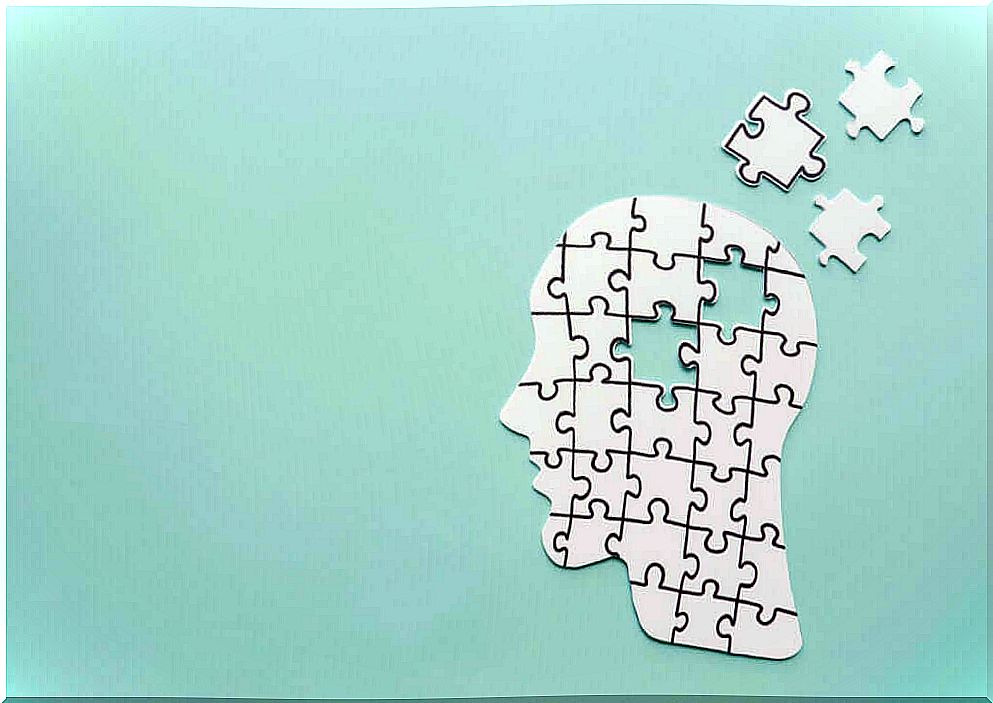9 Differences Between Alzheimer’s And Frontotemporal Dementia

Talking about dementias can cause some confusion. How many types of dementia are there? How do they differ from each other? The reality is that there are many types of dementia, but in this article we will focus on two: Alzheimer’s (specifically, Alzheimer’s disease) and frontotemporal dementia. So what differences do we find between Alzheimer’s and frontotemporal dementia?
Next, we will share nine of them in relation to different variables: age at onset, altered cognitive functions, personality changes, location of lesions, etc. In other words, let’s focus on symptoms, but also on other domains.
Differences between Alzheimer’s and frontotemporal dementia
What differences do we find between Alzheimer’s and frontotemporal dementia? According to Ramos et al. (2008), we can cite the following distinctions.

onset age
The first difference between Alzheimer’s and frontotemporal dementia has to do with the age of onset of each pathology. While the Alzheimer’s disease usually appears after age 65 (and its prevalence increases with age), frontotemporal dementia arises between 40 and 70 years, ie much earlier.
Furthermore, the prevalence of frontotemporal dementia does not increase with age, as does Alzheimer’s.
Types and location of injuries
There are also differences in the location of the lesions. In Alzheimer’s disease, they appear inside the temporal lobe, mainly in the hippocampus, from where they spread to the entire temporal, parietal, and frontal lobe. In the case of frontotemporal dementia, as its name suggests, lesions appear in the frontal and temporal lobes.
In Alzheimer’s, we find loss of neurons and synapses, in addition to the presence of tau proteins (neurofibrillary tangles) and amyloid proteins (neuritic plaques).
In frontotemporal dementia there is also loss of neurons and synapses, in addition to the appearance of tau proteins. However, other elements appear that we do not identify in Alzheimer’s: bulging neurons and, occasionally, Pick bodies. The amyloid proteins and neuritic plaques typical of Alzheimer’s disease do not appear in DFT.
Symptoms
Another difference between Alzheimer’s and frontotemporal dementia has to do with the symptoms. Let’s start with Alzheimer’s. What symptoms appear in the most common picture?
- It starts with memory loss and the ability to learn new information.
- There is a loss of orientation in terms of time and place.
- Language difficulties arise .
- A personality change occurs in the patient and conduct disorders also appear.
- Hallucinations (usually auditory) and delusions can occur.
In contrast, in the case of frontotemporal dementia, symptoms may vary somewhat. Among them, the following stand out:
- Memory is preserved early, unlike Alzheimer’s.
- Personality disorders (as in Alzheimer’s).
- Presence of abnormal behavior.
- The patient may manifest apathy or hyperactivity, as well as repetitive actions.
- There is a loss of affection towards other people.
- There is an emotional impoverishment, as well as an indifference to the surroundings.
- Language difficulties appear, as in Alzheimer’s.
first symptoms
In Alzheimer’s disease, the first symptoms to appear (ie, early) are memory disorders and disorientation. In contrast, in frontotemporal dementia, the first symptoms are a change in personality and “frontal” (ie, uninhibited) behavior.
insight
The insight is a cognitive phenomenon involving ” perception “. This term is used in clinical therapy to refer to the patient’s ability to be aware of what is happening to him. In psychotherapy, according to Seguí (2015), insight is used to perform different interventions.
In people with Alzheimer’s, insight is often very poor or defective (although it is preserved in the early stages of the disease). In contrast, in people with frontotemporal dementia, it is completely lost.
Memory
In memory, we find another difference between Alzheimer’s and frontotemporal dementia. In the case of people with Alzheimer’s, they have frank amnesia that doesn’t improve with clues or cues. Furthermore, memory is affected in the early stages (in the first symptoms of the disease).
In contrast, in frontotemporal dementia, memory impairment is lessened. Mild disturbances appear associated with this cognitive domain, which can be improved with clues or cues (something that does not happen in Alzheimer’s).
visuospatial functions
Continuing with cognitive abilities, visuospatial functions are greatly affected in the case of Alzheimer’s. However, in frontotemporal dementias, these types of functions are preserved.
Remember that visuospatial functions (or abilities) are those that allow us to mentally represent, analyze, and manipulate objects.

Language and motor functions
Another difference between Alzheimer’s and frontotemporal dementia has to do with language. What appears in the language of the person with Alzheimer’s? Three clear changes: anomie, circumlocution and aphasia. In the case of frontotemporal dementia, stereotyped language, echolalia and mutism appear. As we can see, these are very different changes.
Motor functions are also altered in both pathologies. In Alzheimer’s disease, the patient suffers from apraxias (inability to perform intended and learned motor tasks), whereas in the patient with frontotemporal dementia, these functions continue.
neurological signs
Finally, regarding the neurological signs of each disease, in Alzheimer’s myoclonus (spasms of a muscle group) and seizures arise. In contrast, in frontotemporal dementia, urinary incontinence and involuntary reflexes occur (primitive reflexes present in the newborn that disappear with maturation and which, however, reappear due to dementia).
These are nine differences between Alzheimer’s and frontotemporal dementia, although there may be a few more. Without a doubt, these are the most remarkable ones and those that will allow us to make a good differential diagnosis.
As we have seen, they are two different pathologies that share some points or characteristics (for example, alterations or changes in personality, alterations in language and other cognitive functions, etc.).









